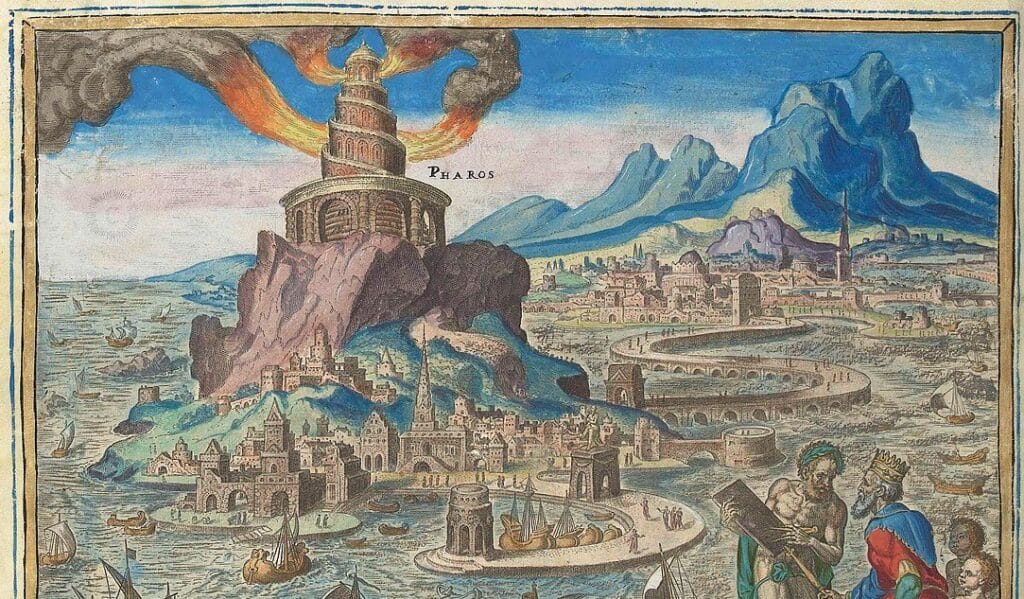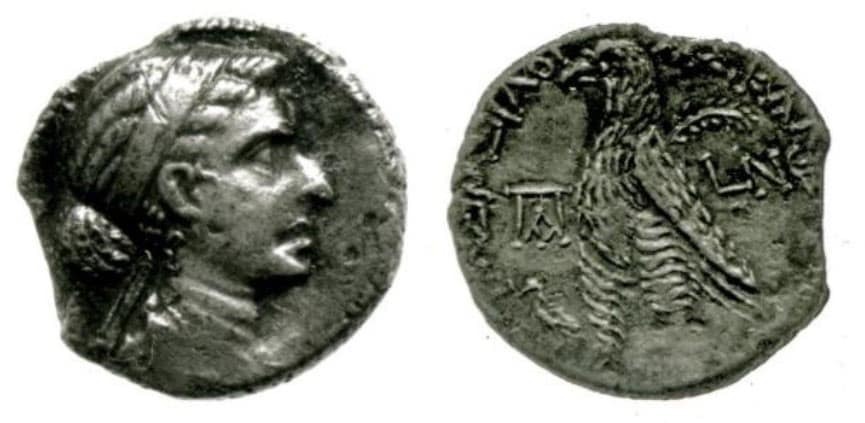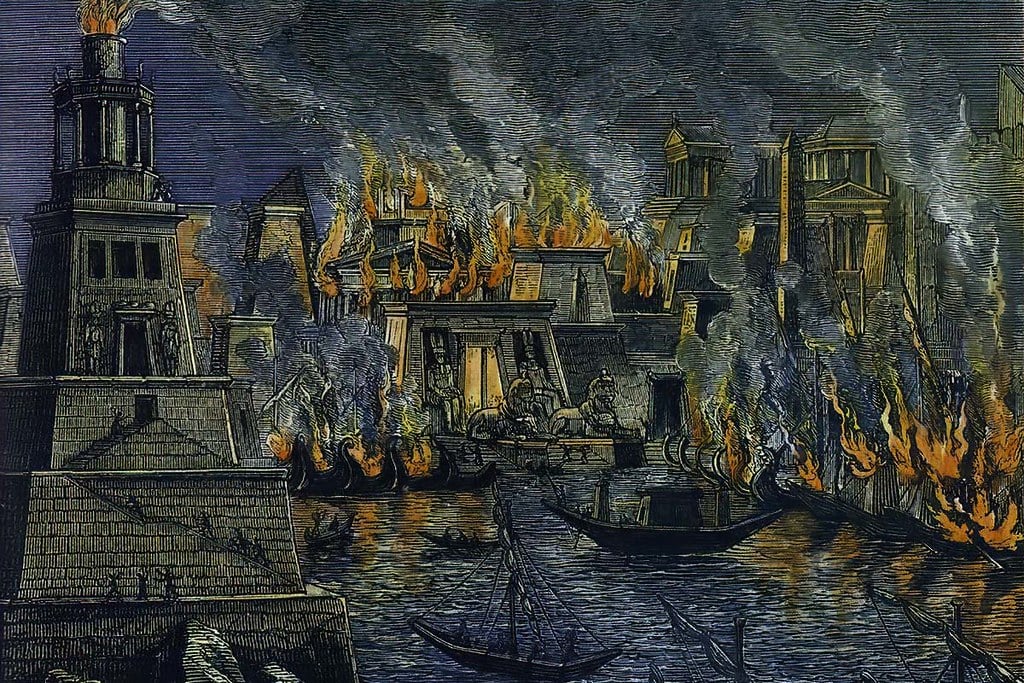
Alexandria, the world-renowned ancient Greek metropolis was founded by Alexander the Great approximately in the year 331 BC. After conquering Phoenicia in 332 BC, Alexander the Great looked onward to Egypt.
The city of Alexandria was built at the edge of the Nile Delta and is situated between the Mediterranean Sea to the north and Lake Mariut to the south. Thus, it was in an ideal trading hub location. Alexander employed an architect from Rhodes, Dinocrates to build his new jewel city. The ancient city’s area covered about nine miles with about four hundred thousand people residing there.
After Alexandria was established, Alexander the Great planned on leading his armies further into the depths of Asia and left his general, Ptolemy, to govern Egypt. Alexander the Great met his end in the year 323 BC. After his death, the Empire was broken into four distinct successor states. These included Antigonid Macedonia, Attalid Pergamum, Seleucid Syria, and Ptolemaic Egypt.
As the capital of this new Ptolemaic state, Alexandria marked the beginning of a culturally rich Hellenistic era in Egypt.
The Ptolemaic Era and the Jewel of the Hellenistic World, Alexandria
The Ptolemaic dynasty originating from Ptolemy Soter I, ruled Alexandria for almost three centuries. The last member of this imperial dynasty was none other than the infamous Cleopatra VII. During this period, Hellenistic culture reached its peak in all fields, including religious, cultural, and political.
After the death of Ptolemy Soter I in 282 BC, his son Ptolemy II Philadelphus (meaning “sibling-loving”) ascended to the throne. Under his reign, Alexandria reached its golden age, and the library accumulated a vast number of scrolls, attracting scholars from all over the Hellenistic world to become the jewel of that world.

The Golden Age
On the practical matters of governance, Ptolemy II Philadelphus managed to expand trade with the Red Sea and establish alliances with formidable powers such as the Seleucid Empire. He built a naval force that asserted Ptolemaic control over the Mediterranean Sea.
Under his leadership, the Mouseion of Alexandria, or otherwise the Library of Alexandria, was established. The library was dedicated to the muses, and it served as a research institute that aimed to document all possible knowledge. The library itself reached its peak under Ptolemy’s successor Ptolemy III Euergetes. However, the first books were acquired during Ptolemy II’s reign.
Another well-known architectural marvel of Ptolemy II’s Alexandria was the Pharos, or the Lighthouse of Alexandria. Towering at an estimated height of over a hundred meters, it was one of the tallest man-made structures of its time and was considered one of the Seven Wonders of the Ancient World.
Its design featured three tiers: a square base, a middle octagonal section, and a circular top, upon which a fire burned at night to produce light. This fire was reportedly visible from up to fifty kilometers away.
The golden age also saw the emergence of literature and poetry, with renowned classical poets such as Callimachus and Theocritus composing their works in Alexandria and thus marking a significant period in Greek literature.
Ptolemy II perhaps achieved this golden age for Alexandria because of his attempts to integrate Greek and Egyptian culture. An idyllic example of this effort is his support of the cult of Serapis. Under his reign, the great Serapeum of Alexandria was erected. It was a Hellenistic temple for the Egyptian god Serapis, who was widely accepted amongst Ptolemaic Greeks.
Ptolemy II Philadelphus’ reign marked a period of unparalleled prosperity and cultural achievement in Hellenistic Egypt. His policies and patronage created an environment whereby arts, science, and commerce thrived. The impact of his reign extended far beyond his lifetime, leaving an enduring legacy on the cultural and intellectual landscape of the ancient world.

Decline of Alexandria
Despite the solid foundations placed under Ptolemy I Soter and Ptolemy II Philadelphus, Alexandria did not manage to evolve or return to its former glory. The decline of Alexandria from Ptolemy III Euergetes’ reign to that of Cleopatra VII’s was marked by a series of political, economic, and social challenges that eventually led to the Ptolemaic dynasty’s demise.
The once-mighty city lost its former glory during this period, which lasted from the mid-third century BCE to the first century BCE. The kingdom’s political stability was weakened by frequent succession disputes and civil unrest. Costly military campaigns, lavish royal expenditures, and poor resource management strained the kingdom’s finances, resulting in increased taxation and public discontent.
Culturally, Alexandria’s distinct Hellenistic character began to fade, exacerbated by rising social tensions between the Greek elite and native Egyptians.
The Last Ptolemaic: Cleopatra VII
While Alexandria’s glory faded, the most famous individual throughout the Ptolemaic and arguably all of Alexandrian history was its last ever ruler, Cleopatra VII. Cleopatra VII Thea Philopator, the last active ruler of Egypt’s Ptolemaic Kingdom, is one of history’s most iconic figures.
Cleopatra was born in 69 BCE and was a member of the Ptolemaic dynasty, a Greek family that ruled Egypt after Alexander the Great’s death. She ascended to the throne in 51 BCE, co-ruling first with her father, Ptolemy XII, and later with her brothers, whom she married following Egyptian tradition.

Ties Between Alexandria, the Jewel of the Hellenistic World, and Rome
Cleopatra’s intelligent political and diplomatic maneuvering defined her reign. She was temporarily exiled after facing challenges from her brother and co-ruler, Ptolemy XIII. However, her meeting with Julius Caesar in 48 BCE, which resulted in a romantic and political alliance, aided her re-accession to the throne. Cleopatra gave Caesar a son, Caesarion, cementing her relationship with Rome.
Following Caesar’s assassination in 44 BCE, Cleopatra allied herself with Mark Antony, one of Rome’s most powerful leaders. Their marriage was both romantic and strategic, as they had three children and formed a significant political alliance. This alliance piqued the interest of Caesar’s adopted son, Octavian, who saw Cleopatra’s influence over Antony as a threat to Roman supremacy.

Cleopatra was a patron of the arts and education in addition to being a political figure. Alexandria remained a cultural and educational center during her reign. She implemented economic policies to stabilize and improve Egypt’s economy, which had been weakened by internal conflict and external pressures.
Cleopatra’s involvement fueled the rivalry between Octavian and Antony, which culminated in the Battle of Actium in 31 BCE. Cleopatra and Antony’s armies were soundly defeated. This defeat signaled the end of Ptolemaic rule and the entry of Egypt into the Roman Empire.
Post Roman and Byzantine Times
Alexandria, once a beacon of prosperity and learning, was transformed into a religious battleground. The emerging Christian faith clashed with the ancient Jewish and pagan beliefs. Christians, emboldened by their doctrine’s absolute truth, began to undermine the symbols of these older religions.
This struggle was especially noticeable in Alexandria during the reign of Theodosius I, who outlawed paganism and endorsed Christianity in 379 to 395 A.D. All pagan temples in Alexandria were demolished or converted into churches by Christian Patriarch Theophilus in 391 AD.
The city was rife with religious strife by 400 AD. The year 415 A.D marked one of the most violent years of the era, as philosopher Hypatia was violently assassinated while the great library and the Temple of Serapis were destroyed.

The city, which had once been rich in culture and finance, had become impoverished due to religious conflict, and it eventually became a prominent Christian center in North Africa.
The Persians of the Sassanian Empire captured Alexandria in 619, but the Byzantine Empire reclaimed it in 628. The city was then conquered by Arab Muslims, led by Caliph Umar in 641, during their campaigns in North Africa. Throughout this period, many churches were destroyed or converted into mosques, and later Christian writers claimed that the great library had been burned.
See all the latest news from Greece and the world at Greekreporter.com. Contact our newsroom to report an update or send your story, photos and videos. Follow GR on Google News and subscribe here to our daily email!



